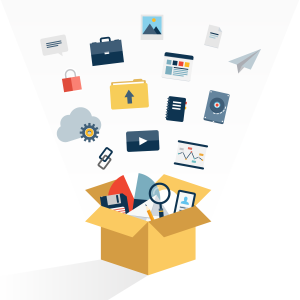HR Analytics: The What, Why & How


WHAT?
Imagine you are confused between different routes to take to reach your location. You are totally new in the city. If someone would provide analytical information about the traffic at every route corresponding to that time of the day then surely it would be helpful for you.
“Route 1 is more crowded than route 2 at this time of the day but route 1 is shorter in terms of distance.”
Similarly in business also we can avoid dilemmas with the help of HR Analytics. When people hear the word ‘analytics’ the first thing that comes into their mind is playing with numbers, data, stats etc. We are not saying that it’s wrong but most importantly HR analytics should be used to provide important insights and relevant relationships between different data to the organisation for effective management of the workforce.

WHY?
Companies spend a lot for HR management and its development. But HR has always been considered as part of the supportive functions in many organisations. According to joshbersin.com, the Deloitte 2015 HR Factbook shows a 4% year-to-year increase in HR spending in the US in 2014, a significant increase in this $400+ billion marketplace. Between 5-8% of this is spent on tools and technology, approximately half is spent on HR salaries, and the rest is spent on external services, content, and contractors.
The big questions are
“Don’t you think it should be a strategic partner?”
“Don’t you think the HR decisions should be given more importance?”
Well, according to survey results by IBM, companies investing in analytics have an upper hand in addressing human capital challenges.
HR analytics is mainly important because of these 3 causes.
1.Helps in connecting the dots easily
2.Adds into relevance of decision making
3.Effective & quick decision making
HOW?

Collecting Appropriate Data
Be it in recruitment or in training & development or in enhancing productivity or in retention of the employees if we can’t identify the proper factors associated with a particular problem then eventually solving it would be a critical issue. For this, it is important to have a look on the below things.
1. Which data to collect
2. Source of these data
3. Method of data collection

Designing Proper Metrics
Having a proper set of metrics to use for further analysis is one of the important parts of analytics.
There is a lot of difference in between measuring the ROI in one-quarter & measuring the ROI in one whole year.
The metrics should be chosen according to needs and circumstances.
Choosing the wrong measures and designing the wrong metrics would result in reaching the decisions which would be harmful to the company.

Relevant Analysis
To do analysis and reach towards relevant findings the organisation needs to have
1. Tools & Software
2. Sufficient data sets
3. People with critical skills
References
http://joshbersin.com/2015/01/spending-on-human-resources-is-up-and-why-it-really-matters-this-year/
https://dupress.deloitte.com/dup-us-en/focus/human-capital-trends/2014/human-capital-trends-2014-survey-top-10-findings.html
Getting Smart About Your Workforce- Why Analytics Matter
By – Mohit Kumar Sethy – Summer Intern – B.Tech. from IIT-Dhanbad & Pursuing MBA in HR – IIM Ranchi
Supervision By – Rishi Raman
Leave a Reply